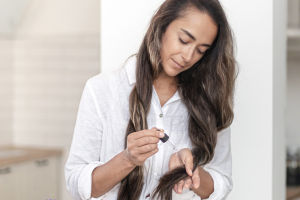Do you follow a skincare routine but still experience dryness, breakouts, or dullness?
Sometimes, the problem isn't what you're not doing—it's what you're doing wrong.
Many people unknowingly make simple skincare mistakes that can lead to irritation or prevent products from working effectively. In this article, we'll uncover the most common skincare blunders and explain how to correct them.
Skipping Sunscreen Regularly
One of the most frequent and harmful mistakes is not applying sunscreen daily. Even on cloudy days or indoors, ultraviolet rays can still affect your skin. Over time, unprotected exposure can lead to early aging signs like wrinkles, uneven tone, and dryness. According to a study, daily sun protection is one of the most effective ways to prevent skin aging and long-term damage.
Use a broad-spectrum sunscreen with at least SPF 30, and reapply every two hours when outside. Don't forget often-missed areas such as the neck, ears, and hands.
Over-Exfoliating the Skin
Exfoliating helps remove dead cells, but overdoing it can backfire. Using scrubs or acids too often may cause redness, sensitivity, and even breakouts due to a disrupted skin barrier. For most skin types, exfoliating 1–3 times a week is sufficient.
Choose gentle exfoliants, especially if your skin is sensitive. Look for products with ingredients like lactic acid or fruit enzymes rather than harsh physical scrubs.
Using Too Many Products
Layering multiple skincare products might feel like self-care, but it can overwhelm your skin and lead to reactions. More isn't always better. Combining strong ingredients—like retinol, vitamin C, and exfoliants—without guidance may cause irritation or reduce effectiveness.
Stick to a simple routine: a cleanser, moisturizer, and sunscreen in the morning; cleanser, treatment (if needed), and moisturizer at night. If you're unsure, consult a dermatologist to build a personalized plan.
Ignoring Your Skin Type
Not all products suit every skin type. Using a rich cream on oily skin can clog pores, while applying a drying gel on dry skin may worsen flakiness. Understanding your skin—whether it's oily, dry, sensitive, or combination—is essential for choosing the right products.
For example, someone with oily skin might benefit from gel-based moisturizers, while dry skin may need creams with ceramides or shea butter for deeper hydration.
Washing With Hot Water
Hot water may feel relaxing, but it can remove away your skin's natural moisture barrier. This leaves your skin vulnerable to dryness and irritation. Instead, use lukewarm water when washing your skin or showering, and follow with a gentle moisturizer to lock in hydration.
Not Cleaning Makeup Tools
Dirty brushes and sponges can harbor bacteria that lead to clogged pores and blemishes. It's important to clean makeup tools at least once a week using mild soap or a brush cleanser. Let them dry completely to prevent mold and germs from forming.
Clean tools not only help prevent breakouts but also allow your products to apply more smoothly and effectively.
Touching Your Skin Frequently
Touching your skin with unwashed hands throughout the day can transfer oil, dirt, and bacteria. This habit can contribute to blocked pores and blemishes, especially if you already have sensitive or reactive skin.
Be mindful of this and avoid leaning on your hands, picking at your skin, or rubbing your eyes. Keeping your hands clean is an easy but powerful way to protect your skin.
Not Moisturizing Oily Skin
It's a common misconception that oily skin doesn't need moisturizer. In fact, skipping this step can trigger your skin to produce even more oil to compensate. The key is choosing the right type of moisturizer—look for water-based or non-comedogenic formulas that hydrate without clogging pores.
Even oily or combination skin types benefit from maintaining a balanced moisture level, especially in dry or cold environments.
Changing Products Too Quickly
Trying new products every week can irritate your skin and make it hard to identify what's really working. Most skincare products take at least 4–6 weeks to show noticeable results. Switching too soon may disrupt progress or cause new issues.
When trying a new product, patch-test it first and stick to it for a few weeks unless you experience irritation. Patience and consistency are key in skincare.
Neglecting Neck and Chest Areas
While we often focus on skincare for the central part of the body, the neck and chest also show signs of aging and sun exposure. These areas are thin and delicate, so they require the same care as the rest of your skin.
Extend your skincare routine by applying cleanser, moisturizer, and sunscreen to your neck and chest daily. This small habit can prevent uneven tone and premature aging.


